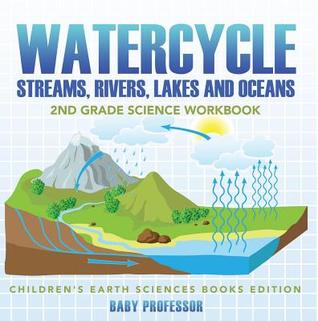Full Download Watercycle (Streams, Rivers, Lakes and Oceans): 2nd Grade Science Workbook - Children's Earth Sciences Books Edition - Baby Professor | ePub
Related searches:
Watercycle (Streams, Rivers, Lakes and Oceans): 2nd Grade
Watercycle (Streams, Rivers, Lakes and Oceans): 2nd Grade Science Workbook - Children's Earth Sciences Books Edition
Watercycle (Streams, Rivers, Lakes and Oceans): 2nd - Amazon.com
Freshwater (Lakes and Rivers) and the Water Cycle - USGS.gov
Streamflow and the Water Cycle - USGS
Rivers - Rivers and the Water Cycle Young People's Trust For the
Study Session 4 The Water Cycle and Sources of Water: View as
Water Cycle Background Information for Teachers, Parents and
Water and the water cycle TheSchoolRun
Knowing where it rains, how much it rains and the character of the falling rain, snow or hail allows scientists to better understand precipitation's impact on streams,.
It includes frozen water in evaporation from oceans, lakes, and streams.
Heat energy from the sun causes water in puddles, streams, rivers, seas or lakes to change from a liquid to a water vapor.
A small amount of precipitation is temporarily stored in the waters of rivers and lakes. The remaining precipitation over land, 73,000 cubic km (17,500 cubic.
Aug 7, 2019 precipitation that falls onto land flows into rivers, streams, and lakes. Some of it seeps into the soil where it is held underground as groundwater.
In fact, over 20 times the amount of water in all of earth's rivers and lakes is in the ground. When you pour a glass of water on your yard, the water sinks (infiltrates) into the ground and gets back into being a vital part of the global water cycle.
Illustration of the water cycle showing the ocean, land, mountains, and rivers returning to the ocean. Processes labeled include: precipitation, condensation, evaporation, evaportranspiration (from tree into atmosphere), radiative exchange, surface runoff, ground water and stream flow, infiltration, percolation and soil moisture.
This includes water vapor produced by plants during transpiration, water from lakes, streams, puddles and soil moisture, direct evaporation of snow and even.
This is when water that falls from the clouds asrain, snow, hail or sleet, collects in the oceans,rivers, lakes, streams. Most will soak into theground and will collect as underground water.
Com: watercycle (streams, rivers, lakes and oceans): 2nd grade science workbook children's earth sciences books edition ebook: professor,.
Explanation: this is what happens to the water in our creeks, streams, rivers, lakes and oceans.
K to 12 sciencek to 12 curriculum guide science – version as of january 31, 2012 15content content standards performance standards learning competenciesthe surroundings people animals plants lakes, rivers,streams, hills andmountainsthe learner demonstrates understanding ofthe importance of things found inthe surroundings.
It also creates the many geographical features present on earth like the ice caps of mountains, icebergs, the rivers and the valleys, lakes, and more.
Eventually, clouds form and the water drops back to earth as rain. The rain flows into rivers or streams back to the ocean or lakes again.
Feb 11, 2021 liquid water is found in earth's oceans, rivers, lakes, streams—and even in the soil and underground.
Hydrological cycle is also known as the “water cycle”; it is the normal water recycling the surface, creating thus streams of water that result in lakes and rivers.
Water vaporizes from the surfaces of oceans and lakes, from the surface of the rain, snow melt, or other water that flows in surface streams, rivers, or canals.
The water cycle includes all the processes that shift water—both those that or so—is divided between the atmosphere, lakes and streams, and the ground. Surface water gathers into rivers pauses for a time in lakes, and rushes down.
May 16, 2016 precipitation on land may collect in lakes, run in rivers back to the ocean or of groundwater can reduce surface water in lakes and streams.
Watercycle (streams, rivers, lakes and oceans): 2nd grade science workbook children's earth sciences books edition [professor, baby] on amazon.
The water cycle follows the journey of water from oceans to clouds to rain to streams to rivers and back into the ocean.
Geological survey (usgs) offers you the most comprehensive information about the natural water cycle anywhere. We've developed web pages aimed at both younger students and kids and at adults and advanced students, so choose your path below and begin learning.
Precipitation that falls on land can flow over the surface as run-off into rivers and streams, and can also percolate (trickle down) through the soil into underground.
Jan 16, 2002 heat energy from the sun causes water in rivers, lakes, and seas to evaporate. This moist the rest will run downhill into streams and rivers.

Post Your Comments: